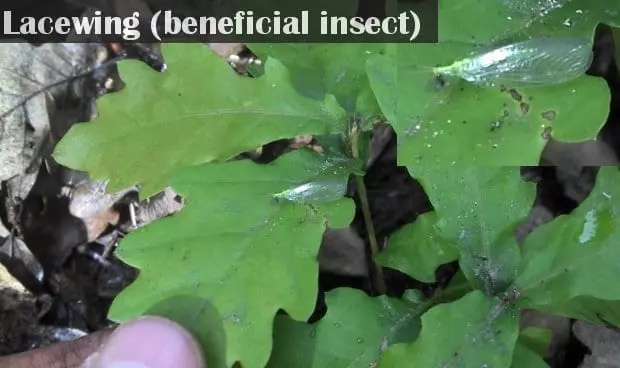Beneficial Garden Insect Collection – Lacewing
Common Name: Native Green Lacewing
Scientific Name: Mallada insigna
Order: Neuroptera
Horticultural situation where found: Lacewing was found on an English Oak (Quercus robur) seedling. The seedling is growing in a garden bed where a lot of the plants have sooty mould on them. This leads me to believe the lacewing might have been feeding on aphids. The aphids produce honeydew and the honeydew cause the sooty mould to grow.

Method of feeding (including type of prey): Adults – Chewing mouthparts. Adults feed on soft sap sucking insects such as soft scale and aphids; they also feed on honeydew, pollen and nectar. Larva – Modified chewing mouthparts for sucking. They feed on ants, aphids, mites, thrips and whitefly.
Life cycles: Complete metamorphosis – Egg, larva, pupa and adults.
Feeding stages: Adults – Chewing mouthparts. Adults feed on soft sap sucking insects such as soft scale and aphids; they also feed on honeydew, pollen and nectar. Larva – Modified chewing mouthparts for sucking. They feed on ants, aphids, mites, thrips and whitefly.
Distinguishing features for identification: Body – Small to medium, elongated, fragile up to 50mm long. Wings – Two pairs nearly equal lace-like wings with a network of veins. Wings held tent like over body when at rest. Wingspan ranging from 5 – 150mm. Head – Prominent head. large compound eyes, ocelli absent. Antennae long and thread like or clubbed. Abdomen, no cerci.
Commercial availability: Yes, can be purchased, but may not be economically viable.
Identification References (including page no): Plant protection 1, p 129
The above information and image was kindly donated by Werner (horticulturalist)












